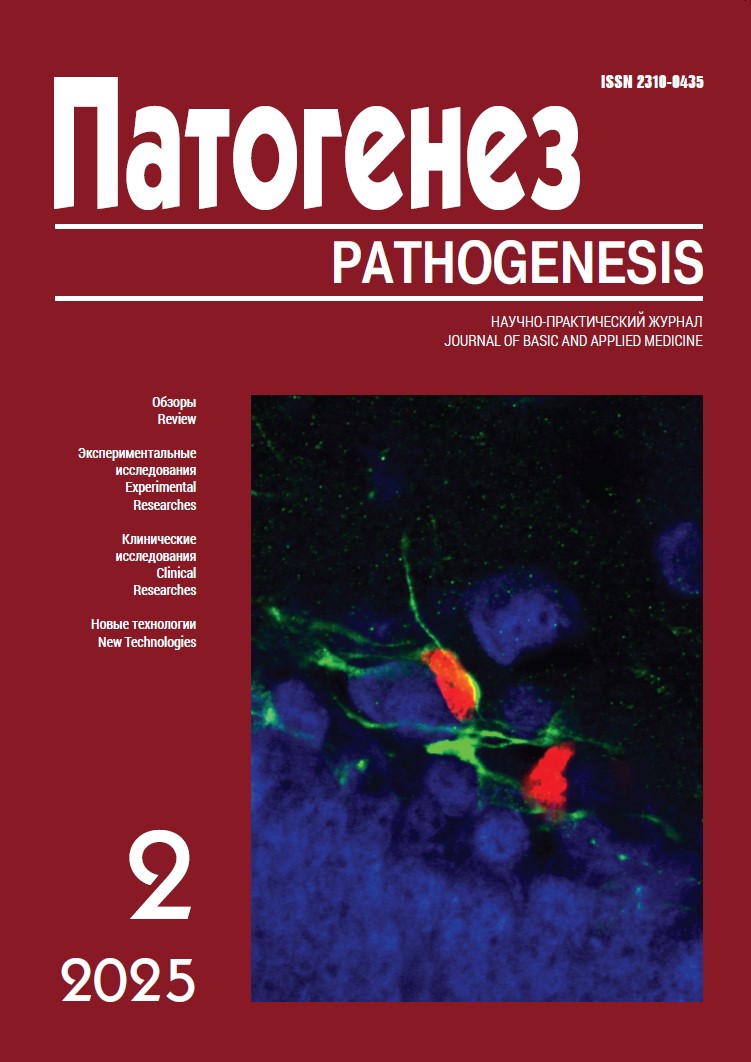Etiopathophysiological mechanisms of ankylosing spondylitis development (clinical case)
Abstract
Ankylosing spondylitis is the most studied of the spondyloarthritis subtypes. In this family, ankylosing spondylitis is a rare but classic form that mainly affects the spine and sacroiliac joint, resulting in loss of flexibility and fusion of the spine. The exact etiology of ankylosing spondylitis remains uncertain, it is known that genetic predisposition, especially the presence of the HLA-B27 gene, plays a key role in the development of the disease. However, like any other multifactorial disease, AS is caused not only by genetic predisposition, but also by the influence of external factors. Many environmental factors are triggers for the development of the disease in genetically susceptible patients. Clinically ankylosing spondylitis is a complex autoimmune disease that significantly affects the patient's life. It can lead to a significant decrease in the quality of life of patients and requires an integrated approach to diagnosis and therapy.
The aim of this study is to describe a clinical case of ankylosing spondylitis and show the features of its course.
The material for the study was the medical history of an inpatient with the main diagnosis of ankylosing spondylitis.
Research results. A 38-year-old man was admitted to the rheumatology department with symptoms typical of ankylosing spondylitis. The patient has been suffering from inflammatory pain in the thoracic spine, sacroiliac and other small joints since May 2019. Laboratory and instrumental examination revealed a diagnosis of HLA-B27-negative ankylosing spondylitis. Treatment included the use of non-steroidal anti-inflammatory drugs, methotrexate and Certolizumab pegol (Cimzia). The patient's condition began to improve and the disease entered remission.
Conclusion. Timely administration of GIBP and careful monitoring of clinical and laboratory parameters in real clinical practice contribute to a significant reduction in disease activity.




